
That having been said, is there any (still relevant as we speak) sportswear garment that is older or more classic, stately, or characteristically sophisticated than that of the rakish rowing blazer, the ne plus ultra of sports ‘jerseys/kits’ as well as the pioneering antecedent to the staple “blazer” form as we know it today?
Upon considerable reflection…nothing springs to mind.
In comported styling a vibrant yet sartorially poised living vestige of an all but bygone era (i.e. Edwardian England) whose notable sartorial lore has been impressively preserved for posterity within its immaculate form, the rowing blazer (it bears peculiar note in a contemporary context) is an item that is capable of injecting instant sartorial flair into your summer wardrobe rotation no matter which distinctive style within its rather quite colourful wheelhouse you are drawn to (or rather fancy) most: plain, trimmed or (regatta) striped.
Inasmuch, it is undeniably a cult classic that— should you consider investing in one — is more then capably equipped to serve as a rakish upgrade to your atypical navy blazer (i.e. the smart-casual ‘exoskeleton’ of any well-rounded gentleman's wardrobe) whose once purely functional traditional sportswear utility has evolved over time to intriguingly take on a vastly expressive ‘go-to-hell’ characteristic charm that is rather quite appealing above all else.
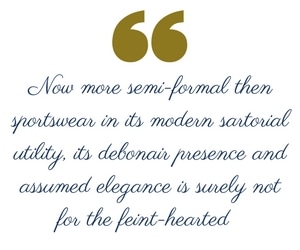
For example, in the competitive sport of rowing the colour of one’s blazer or trimming is a distinguishing styling cue still used to this day to identify which club or country a gentleman (or lady) rows for (or had in a previous life) whereas such details as the number of stripes on one’s cuff (which signify what level they may row at) or the amount of preserved grime and grit on an inherited club blazer are all respectively unique characteristic badges of honour that tell their own tales about the wearer's successes, affiliations, tastes or lifelong sense of community.
To wit once exclusively worn as a competitive jersey or kit by every rowing crew (and club) worldwide but now sported most notably whilst on dry land between races (or sprints) by spectators, rakes and athletes alike, it certainly stands to reason these blazers are most definitely not for the feint hearted given their oft overzealous designs. Howbeit, it indeed nevertheless warrants mention that they are nonetheless equally primed for wear by any style-conscious modern gent who is looking to add a tasteful nautical touch to his seasonal wardrobe that is capable of being sported to an enterprising (nautical or otherwise) variety of social occasions that range from those of a heightened level of (tongue-in-cheek) pomp and circumstance to those of unique leisurely staging.
Available in what has inarguably become a seemingly bottomless menagerie of fashionably outlandish bold (and subdued) regatta stripes, striking hues, contrasting trims, and all manner of elegantly embroidered heraldic crests and badges, should you commission a rowing blazer for yourself it can effectively be (as such) anything your heart desires it to be from a retro styled nod to the past too a completely individualistic and expressively unbridled mark of character — but never, out of respective for rowing heritage and yourself, a carbon copy of a preexisting clubs.
Whether to or fro, and whether you be for or against wearing one for pleasure, I do believe it goes without saying that it is indeed both (understandably) intimidating as well as perhaps a touch alarming to some. And yet, it is also (I promise you) an instant conversation starter and unique investment piece that you will get a lifetime of styling (and story telling) out of — it is arguably ageless in both its wear and occasional utility.
So, and whether you fancy yourself a fan of rowing or not, at the least we all should applaud it (if but for nothing else) for laying the initial groundwork for the modern (navy) blazer, in a larger sense, to become the global menswear staple it has positioned itself as being today.
Howbeit, here’s a succinct look into its gilded past as well as style and shopping guide for any interested party whose interest has been sartorially piqued…
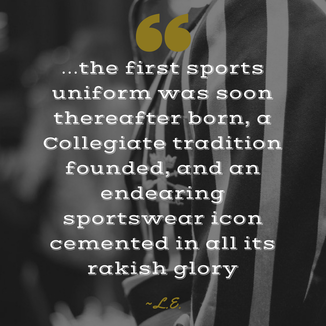
Having been first documented in reference in the 1852 Cambridge University Almanack, the original pioneer of its form, function and standardized popularity is said to have been the Lady Margaret Boat Club of Cambridge (founded 1825) whose vivid scarlet rowing blazer rendition — referred to as ‘blazing red’ — helped usher in the term ‘blazer’ into not only the English lexicon but (preppy/sportswear) sartorial lore.
Traditionally loose-fitting (said to be much alike a modern windbreaker), deconstructed (i.e. soft shouldered so as to allow for a full range of movement/actual rowing), unlined, and cut from a thick (i.e. warm) flannel that would best serve its practical purposing, the original rowing ‘jacket’ was designed to be worn exclusively by athletes (to help spectators distinguish one crew from another from the distant shoreline) during either competitive races or rigorous training sessions rather then on ‘terra firma’ in the casual (as well as formal) manner in which it is most notably sported today.
Howbeit, the first sports uniform was soon thereafter born, a Collegiate tradition founded, and an endearing sportswear icon cemented in all its rakish glory and dashing pageantry.
Unsurprisingly, and much like any other elitist status symbol to follow in its stead, the popularity of the rowing blazer (i.e. boating blazer to some) quickly began to balloon as the closing of the 19th century crept into sight with a variety of croquet, rugby, cricket and even football clubs (to name but a select few) falling in line with their own unique variations of its form so as to not miss out on this budding sartorial phenomenon.
With an ever growing legacy that was now all but on the cusp of greatness, the rowing blazer was slowly but surely becoming positionally primed to both shred its sportive confines and spread its influential wings into the sartorial realm, a task in which it took in stride as is evidenced in the fact that most any similar styled, loose-fitting flannel jacket to follow in its footsteps was instantly dubbed a ‘blazer’ from the 1890s’ onward.
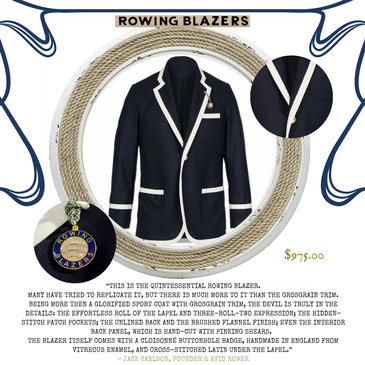 — The Luxury Pick --
— The Luxury Pick -- By the 1910s’ it had successfully ventured across the Atlantic to enrapture the imaginations of Ivy League students whereupon the respective rowing clubs of Princeton, Cornell, Yale and Harvard all saw fit in adopting it in kind as their own.
Informal as it may have first been, by the height of the Ivy League look (in the 1950s’ and 60s’) the rowing blazer had taken on a new role as the (functionally) revered British equivalent to the prestigious Letterman jacket of Ivy lore; both had become symbolic sartorial totems of prestige whose social utility (and importance) allowed for them to be worn as a badge of honour to a variety of social functions whether casually on campus or formally to evening affairs.
This was, you could say, what was to be the beginning of a beautiful and sartorially bountiful (preppy) marriage that has persisted for the greater parts of the past 100 years.
At this juncture in time at the height of its power and worn world round (from Oxford to Harvard) by rowers so as to distinguish (or elevate) themselves from the masses (albeit in a vastly different manner then originally intended), the rowing blazer had completed its transition from a ’sports kit’ fashioned for use on the water to an iconic status symbol forevermore destined to cut its illustrious silhouette almost exclusively at social functions and in membership only clubhouses.
Casting an eye once again upon Britain (whilst fast forwarding a few scant years), what you would soon find is that it was destined to take on an even more radical role as it was soon thereafter adopted as a bonafide (subversive) wardrobe staple by champions of the British Mod movement during the heyday of rock 'n' roll in the 1960s’ and 70s’. This, of course, was a truly unexpected cultural turn in truth that all but bookended its quite varied yet nonetheless illustriously storied journey up until the contemporary age.
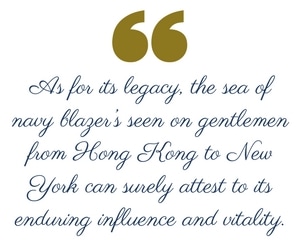
In hindsight, it is what you could arguably deem the first (and still the most fashionable/flattering) sports jersey in existence and remains to this day structured and styled in very much the same manner as upon its inception save for advancements in fit and fabrication being markedly apparent.
As for its legacy, the sea of navy blazer’s seen on gentlemen from Hong Kong to New York can surely attest to its enduring influence and vitality. In fact, much of the formalwear we rely upon today actually owes much to its pioneering turn and iconic status— from the aforementioned navy blazer or tweed sport coat through the officiating uniforms of Wimbledon (tennis) officials and club blazers fashioned for a spot of cricket or croquet.
The only change?
It’s role in the uniform driven sportive realm wherein it has been usurped by performance enhancing garments with sweat-wicking capabilities (amongst others) as the competitive uniform of choice for those sculling about through the water.
All that having been said, it is without question a piece of sportswear iconography whose enduring legend and cult status continues to thrive and live on in reverence as we speak in spite of the fact that it is likely far-removed from the sartorial habits and occasional mores of the average gentleman’s daily life and everyday wardrobing needs.
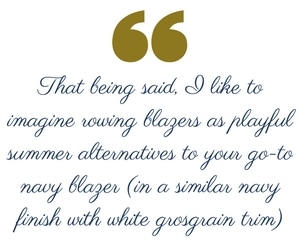
Racing history and original training purposing/styling aside, it warrants particular note that rowing blazers, which were once (and still traditionally) strictly reserved for active and ‘retired’ rowing club members (i.e. competitive, private and school/university crews) alone, have since been given a new lease on life in the contemporary age by casual spectators of the sport, seasoned sartorialist’s and enterprising preppies alike who not only religiously wear their own (often custom) variations to a choice selection of prestigious rowing events on the social calendar but also casually and formally as they so see fit.
Howbeit, some would still likely have you believe that sporting one makes for a rather tasteless endeavour that is without merit unless you have earned its honoured distinction through many a trial and tribulation but I’d argue very much to the contrary as I believe that is has (recently) outgrown its once sectarian past in becoming something that is neither antiquated nor without its own transitional styling merit.
Insofar as such no longer strictly reserved (in wear) for specialized functions alone such as the Royal Henley Regatta as but a means to either properly channel the spirit of the event or immediately denote club affiliation, rowing blazers can now be comfortably worn in a variety of manners whilst one is ashore at his (or her) leisure rather then simply aboard a boat or whilst sipping on Pimm’s.
Having found a new home on land wherein they have been tactfully employed over the years in function as the crown sartorial jewel (to varying degrees of success) at weddings and (summer) black tie events as well as in everyday life and during sailing excursions, each unto itself is capable in character and styling of bringing its own unique breed of sportswear inspired sartorialism to any occasion.
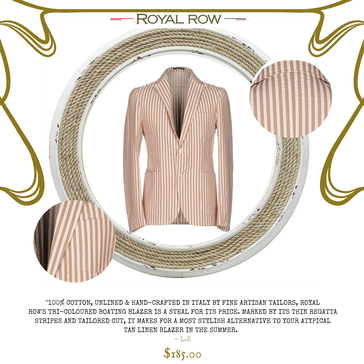 — The Budget Friendly Blazer --
— The Budget Friendly Blazer -- Be that as it may, my advice would be to opt for a simple yet elegant two-toned navy-and-white/cream piped rowing blazer sans a club crest above all else so as to be able to fully leverage a full spectrum of styling possibilities across the board or to rather perhaps design your own crested iteration should you truly insist upon channeling the endearing spirit and sense of occasion that is tied to its competitive sporting heritage.
As for tastefully accentuated accoutrements that always work alongside it, the rowing blazer pairs exceptionally well with a variety of trousers, with chinos (in a muted cream, stone, beige, navy, beige or camel) often being the order of the day as well as (to a lesser degree) a variable cornucopia of regatta striped trousers, white denim and light grey flannel trousers. Shorts, on the other hand, should be taken into consideration albeit with extreme caution being at the forefront of thought.
North of the mid-riff, dress shirts (with grandad, button-downs and club collars), knit polos and solid t-shirts (all in white, blue or variances of brown) have all proven themselves capable partners over the years while knit ties fashioned with a Repp or Regatta stripe (or rather in a playful polka dot) are safe selections as well that will always play off particularly well in a variety of settings.
Footwear wise, your options include chestnut Oxfords, Chelsea boots (very Mod-ish), saddle shoes/spectators, suede double-monks, full brogues and even perhaps boat/deck shoes (for those more sportively inclined) depending on your prevailing tastes and comfort levels — just do keep in mind that its best to avoid (formal) black footwear in the summer at all costs save for black-tie affairs.
On the accessories front, and in venturing to the final frontier that is the ancient art of millinery, it goes without saying that there are a scant few occasions and pieces in which the jaunty (hard) straw boater can be sported with (albeit with tongue-in-cheek) — the rowing blazer being one. Without question a considered choice that will mark you out as a confident and enterprising gentleman whose is destined to cut a rakish Edwardian dash, the classic boater is to the rowing blazer (and Royal Henley Regatta) what the coxswain is to the success of any crew: simply essential. That being said, and for those who are understandably not avid champions of skimmers nor rowing caps, I’d console rather for electing for a simple yet eminently refined panama as it is considerably more universally flattering as well as elegant and handsome.

The simple answer is yes, albeit with a shade of (sartorial) grey being in play that alludes to the rule of thumb of never carelessly adopting a specific clubs colours or wearing its embroidered crest upon your breast pocket should you not be a member (active or retired) of or affiliated with said club.
That being said, I liken rowing blazers to being either (1) a playful alternative to your go-to navy blazer (in a similar navy finish with white grosgrain trim) or (2) as an enterprising sartorial upgrade to your atypical workout hoodie that is marked by its unrivalled level of innately imbued sportive elegance.
As such, and outside the realm of rowing and boating, the unexpectedly versatile rowing blazer can most assuredly be styled and (smartly) incorporated into a variety of casual and formal looks depending on the nature of the occasion in question.
From wearing it everyday as a sort of makeshift seasonal uniform alongside white trousers (or denim) and a dress shirt through employing it as an evening wear alternative (with the traditional fixings: bowtie, waistcoat, dress trousers, patent leather shoes) for more formal social affairs, the rowing blazer can help you cut a elegant dash whilst being styled in a myriad of considered fashionable guises.
For inspiration as to possible styling avenues to explore look no further then the exclusively curated three looks (and style lookbook above) which follow below…
—Blazer-- |
—Blazer-- |
| Upon its initial bow and introduction to the personal styling domain a garment strictly reserved for wear during competitive races and training (it was essentially the ‘first’ hoodie/sports uniform after all), the rowing blazer has since become a revered cult status icon that long ago shred its once insular sportswear connotations. Undeniably bold and statement-making in its reflective presence as well as specialized in its purposing, it has nevertheless seen its fair share of sportive adaptations (as well as adoptive personas) over its near two century existence — from the many boating, cricket and tennis inspired takes on its form through its role as a counterculture Mod wardrobe staple. And yet, through thick-and-thin, it still remains inarguably synonymous with rowing — a spectating sport of the highest order — to this very day. | Brian Dales ($222) | Bark ($166) | Maddox Street ($99) | Royal Row ($310) | Collier & Robinson (Custom) | Walters of Oxford (Custom) |
In enduring influence the pioneering predecessor to the quintessential navy blazer that now holds court over every modern gents wardrobe, the rowing blazer continues to this day to leverage its sporting heritage and distinguished past in due course of delivering an extraordinary garment of revered merit that unabashedly celebrates all the cultivated pomp and circumstance (i.e. heraldic styling, Edwardian lineage, upper-class totem pole status ) is has accumulated over the years without moderated restraint.
Now more smart-casual then sportive in its modern utility and immediate purposing, at the end of the day it warrants final note once again that its debonair spirit and characteristic elegance is certainly not for the feint of heart.
Be that as it may, (preppy) Letterman jackets best be warned as the rowing blazer (as well as all of its sport world derivations) has always been the pinnacle of refined athletic aesthetics, uniformity, and functional (as well as sartorial) utility no matter what anybody else would come to have you believe… and looks all but destined to continue unabated in that role for time immoral.
Share your thoughts, anecdotes and opinions…
Also, and should you be interested in taking up rowing as a sport or introducing rowing training into your fitness regimen, I found this rowing training guide to be rather quite informative and notable for any interested party.
Feel free to chime in below should you desire…
ENJOYED THE READ? YOU MAY ALSO LIKE:



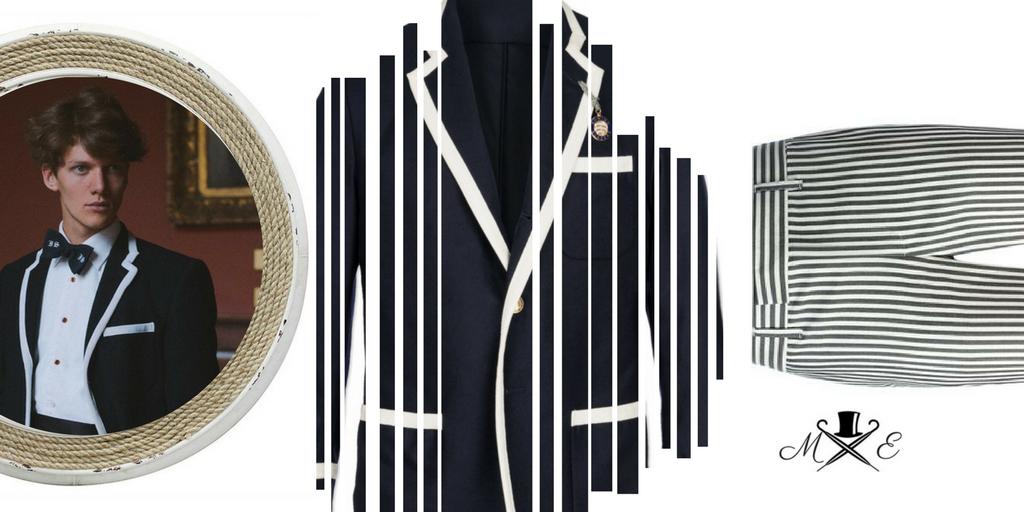




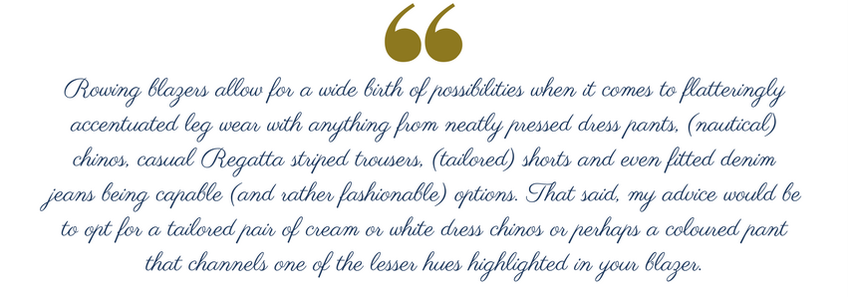


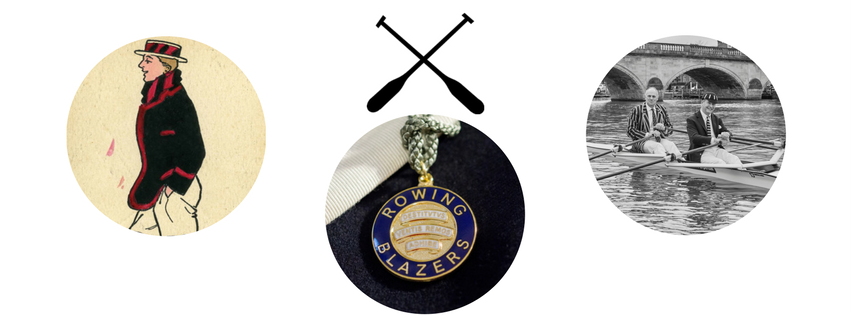

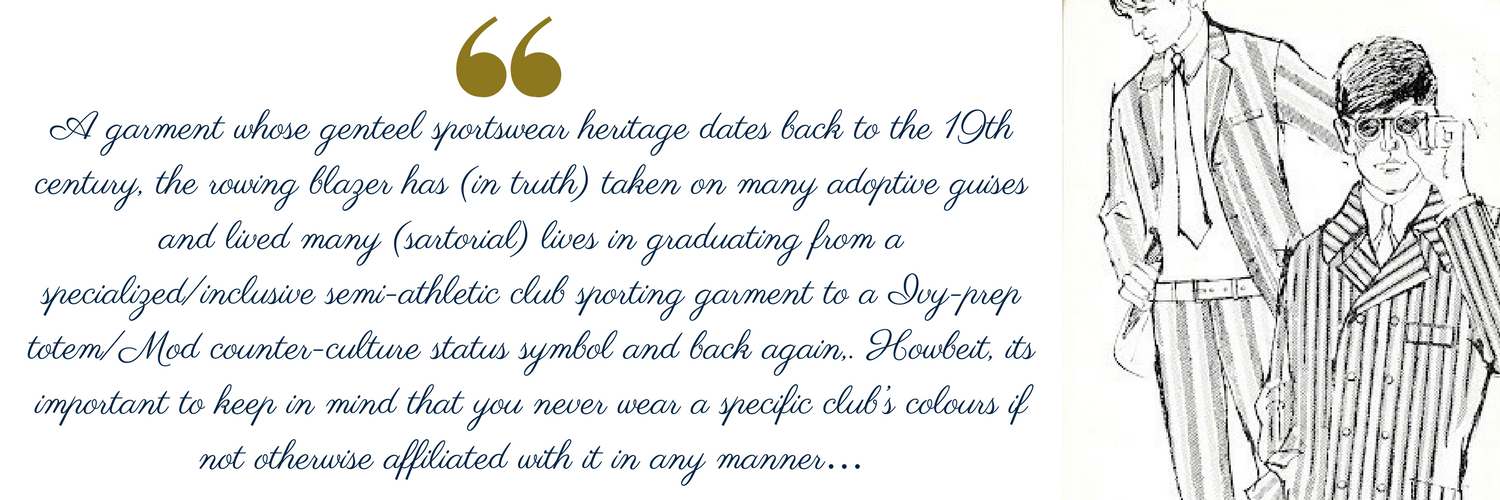





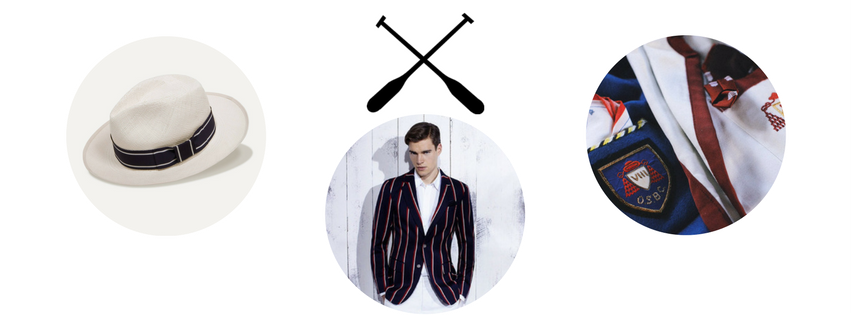


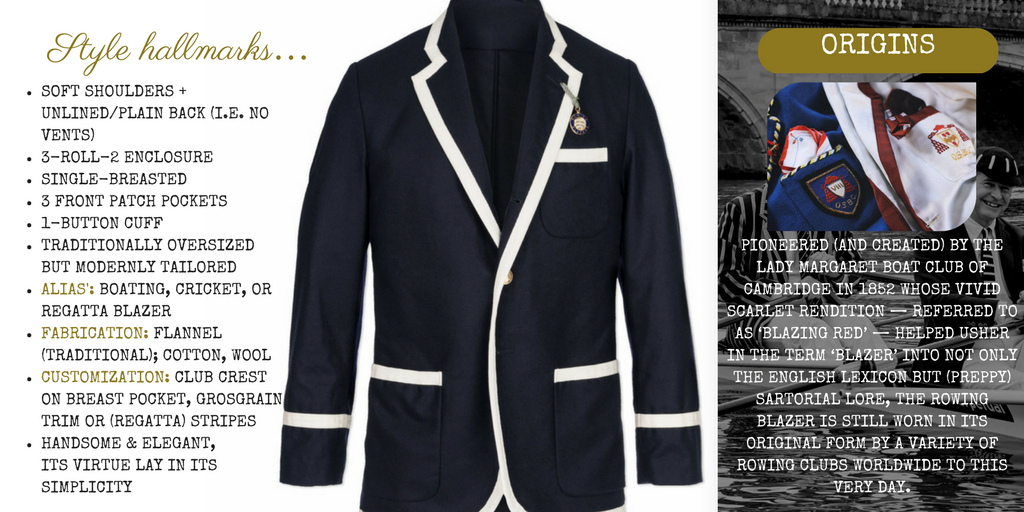




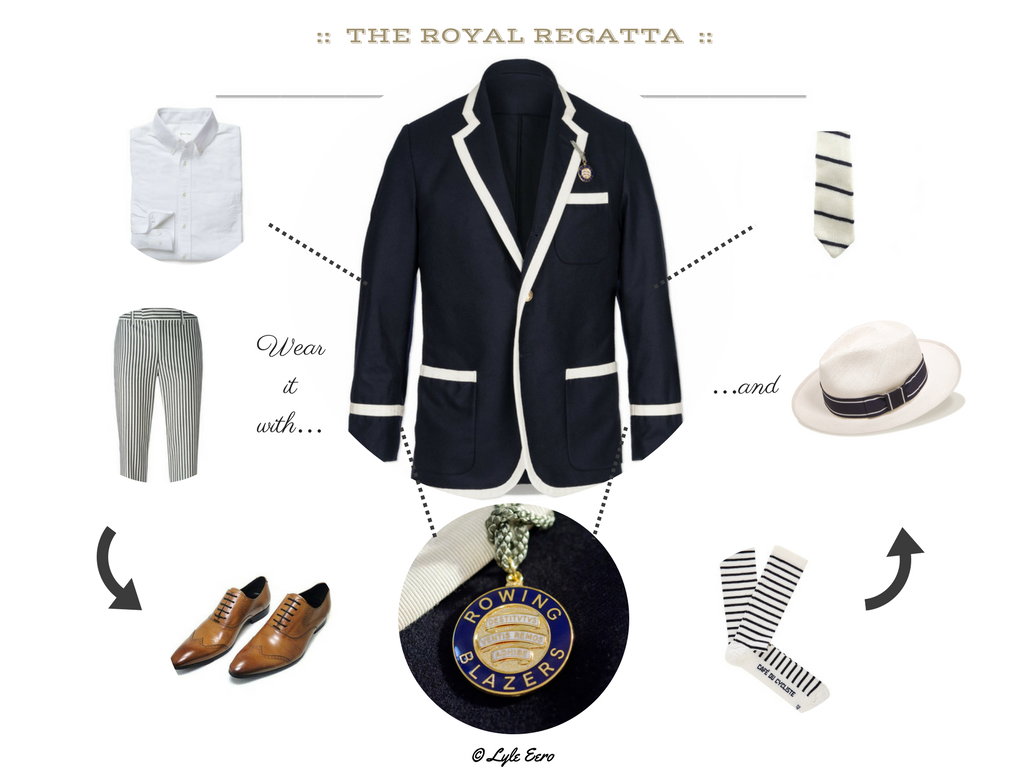


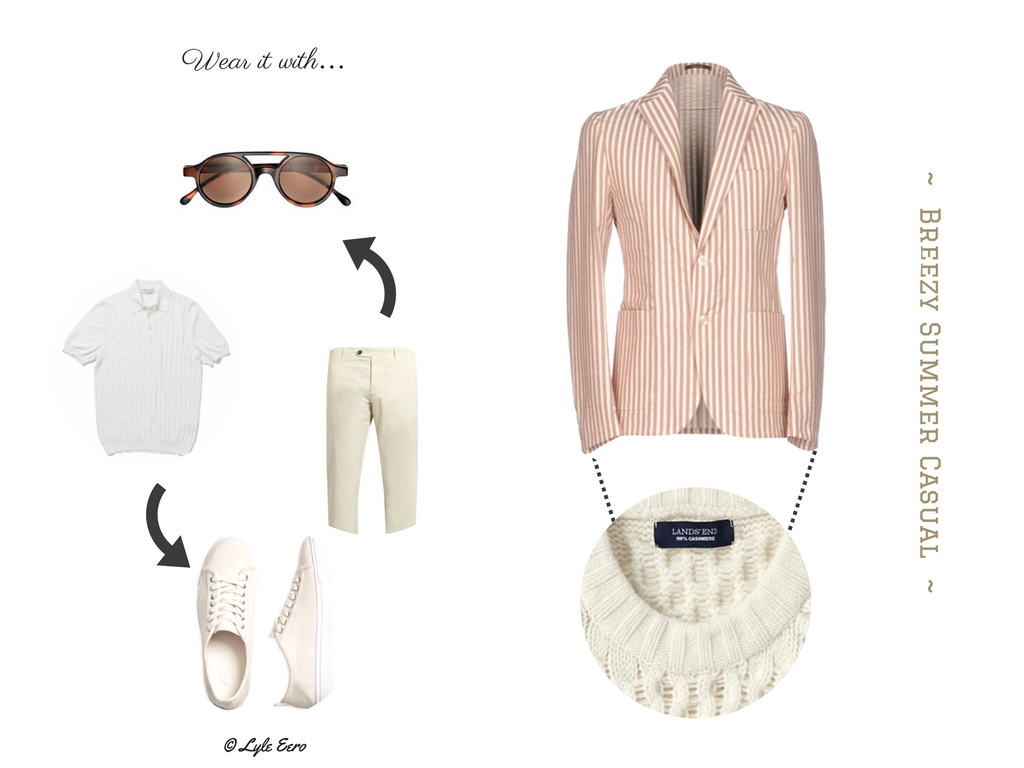
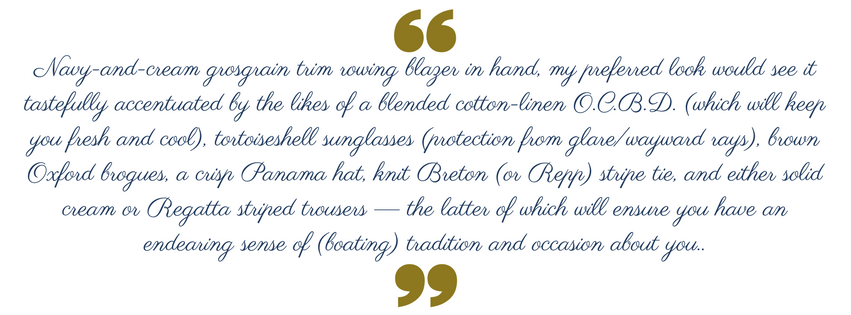
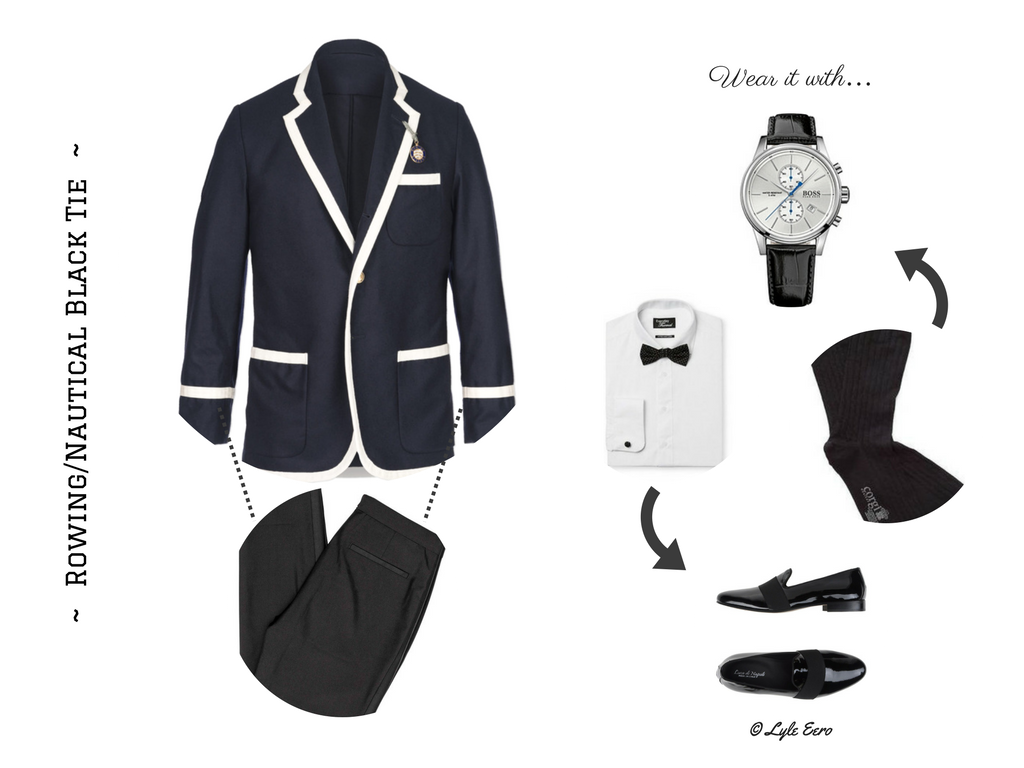


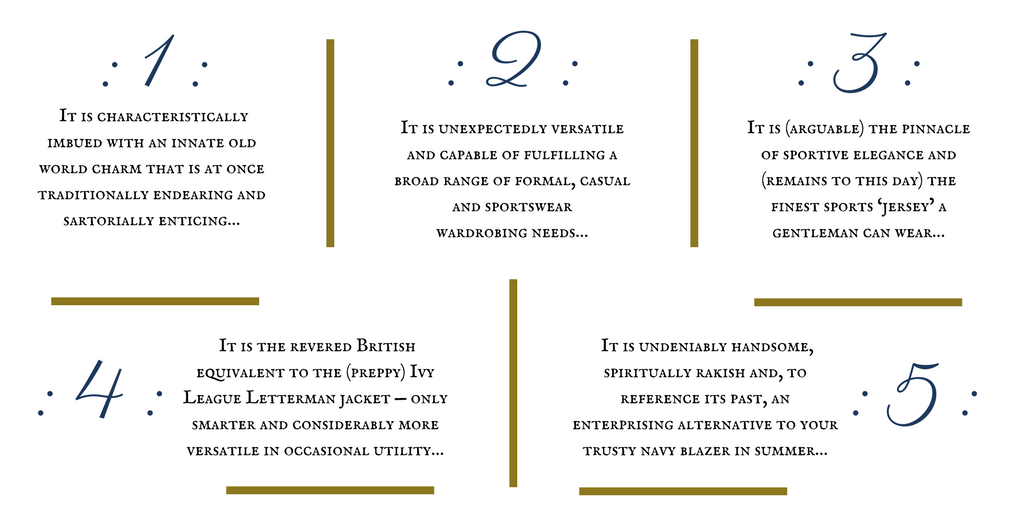


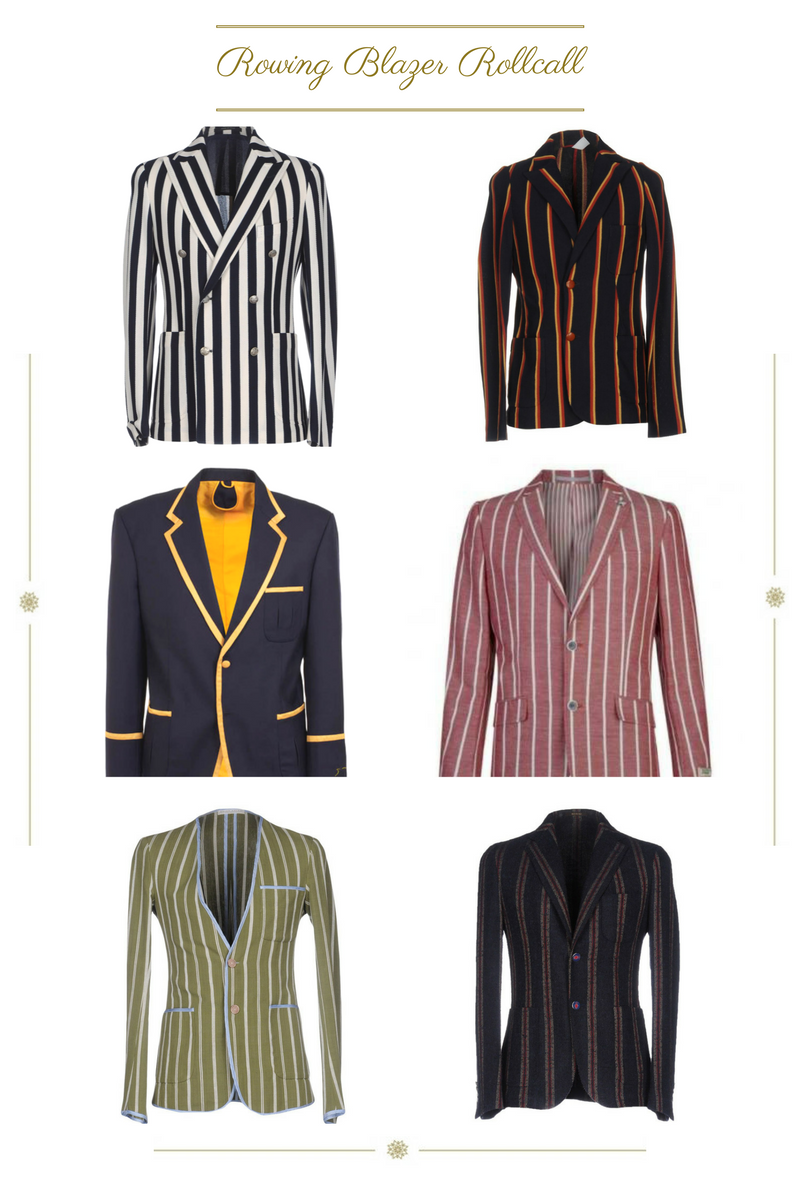



 RSS Feed
RSS Feed













